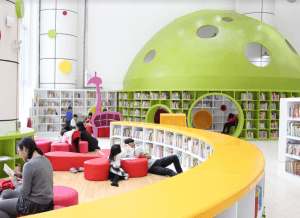There is no such thing as a child who hates to read; there are only children who have not found the right book.” – Frank Serafini
Growing up, I remember reading a large number of fiction books compared with nonfiction. I loved the feeling of getting lost in a story and still to this day can indulge in this type of activity for many, many hours at a time. My single memory of actively choosing to read a nonfiction book resulted in me borrowing and re-borrowing the same book for a whole term. I remember it being a book about ponies and I loved it. Shortly after reading that book, I successfully managed my convince my parents to buy me one of my own.
As a student, nonfiction reading was non-negotiable for the purpose of school, however everything else I read was fiction. This trend continued as I worked through my teaching degree and into fully fledged adulthood. Not surprisingly, my love of fiction has been passed onto my children, who are showing a clear preference for the fiction genre. But should they be reading fiction almost exclusively just because that’s where their interest lies or do they need to be reading non-fiction just as often?
The students at my current school are blessed with a well-resourced library that has a wonderful collection of both fiction and non-fiction books, although I would argue that the collection is not as well balanced in the early years, with a far greater number of fiction books compared to junior nonfiction. Library lessons run by our teacher librarian toggle weekly between discussing fiction and nonfiction books. To promote exposure to both genres, students are required to borrow books from both fiction and nonfiction, although whether or not they are read at home becomes the choice of the student.
I have always been firmly in the camp of encouraging students to read for enjoyment. During leisure reading time, children should be able to read what interests them if they are going to develop a love of reading. Self-directed and inquisitive children are more than likely going to lean towards nonfiction as they search for new knowledge and information while other students use fiction books as a means to escape. Naturally as teachers, it is our responsibility to teach students how to read and comprehend both fiction and nonfiction and to teach them that there is value in, and a purpose for both.

Photo by Jamie Taylor on Unsplash
A library collection is reflective of the community in which it sits and the purpose for which it serves. Furthermore, it is an every evolving entity and has a life cycle which never ends (Hibner & Kelly, 2013, p.22). My experience with libraries as a classroom teacher has taught me that a library collection serves a broad range of groups and purposes, and as such, must contain a balance of resources, be they digital or analogue.
Despite spending many, many hours of my life in libraries, I am yet to work in one, so I was interested to do some further reading this week about developing collections. From my readings this week, I was surprised to learn that there is no one way to develop and manage a collection, but rather a variety of strategies that different libraries employ in order to best meet the diverse needs of the library community. In her book, Fundamentals of Collection Development and Management, Peggy Johnson (2009, p. 108) says:
Selection is both an art and a science.
Johnson (2009, p. 108) talks about the selection process being one which draws not only from knowledge and experience, but also intuition. She also says that the mastery of collection management is developed by the repeated and frequent practice of collection building. This idea challenged my thinking as I had, presumably incorrectly, assumed the the collection of books must follow and adhere to a specific policy. I had also assumed that when a collection policy was written, that’s how it would stay. However, Hibner and Kelly (2013, p. 24) suggest that just like the collection, the collection management policy must also be regularly updated in order for it to be of use. Initially, I wondered what they purpose of a collection policy would be if it was going to constantly change, however upon reflection, I came to understand that as budgets and resources change regularly, so too must the collection policy if it is going to remain current.
As another week passes, I am reminded of just how little I know and how much more I need to learn about the complexities of collection management and maintenance.
References
Hibner, Holly, and Mary Kelly. Making a Collection Count : A Holistic Approach to Library Collection Management, Elsevier Science & Technology, 2013. ProQuest Ebook Central, https://ebookcentral.proquest.com/lib/csuau/detail.action?docID=1575569.
Johnson, P. (2009). Fundamentals of Collection Development and Management (Vol. 2nd ed). Chicago: ALA Editions. Retrieved from http://ezproxy.csu.edu.au/login?url=http://search.ebscohost.com/login.aspx?direct=true&db=nlebk&AN=267756&site=ehost-live
 Collection Management
Collection Management
One of the many roles of the teacher librarian is to develop and manage the library collection. In the rapidly changing digital climate, this task is a complex and ever-evolving one, and requires constant evaluation and consideration.
The National Library of New Zealand states that:
A library collection is made up of all of the physical and electronic items that have been curated with a specific audience and purpose in mind.
To develop and maintain this collection, the librarian must undertake a series of tasks which include:
- Identifying and planning for potential and available resources
- Select resources
- Organising resources
- Evaluate resources
- Deselect resources, commonly know as weeding
-National Library of New Zealand: Collections and Collection management
This week was my first introduction to library collection management. In addition to learning about some of the main tasks involved in collection development and management, I was also introduced to some of the challenges that come as part of this task. Unsurprisingly, budget, technology and a continually evolving curriculum were identified, but one challenge which I had not previously considered was that of ethics. A school’s code of ethics may very well restrict what can be included in a library collection, information which I found both interesting and valuable to know.
References
National Library of New Zealand: Collections and collection management (n.d.). Retrieved from https://natlib.govt.nz/schools/school-libraries/collections-and-resources/collections-and-collection-management

Source: Pixnio
As I settle down in front of my laptop, my mind wanders back to the last time I studied, almost 15 years ago. I had an unreliable internet connection, at best, and the majority of my study texts came from a physical book. Now, here I sit, developing a blog in which to share my thoughts, and setting up all the software required to allow me to ‘chat’ with others in my class. The world is a vastly different place now and I am looking forward to every minute of this journey. So here’s to new beginnings!

 Collection Management
Collection Management
